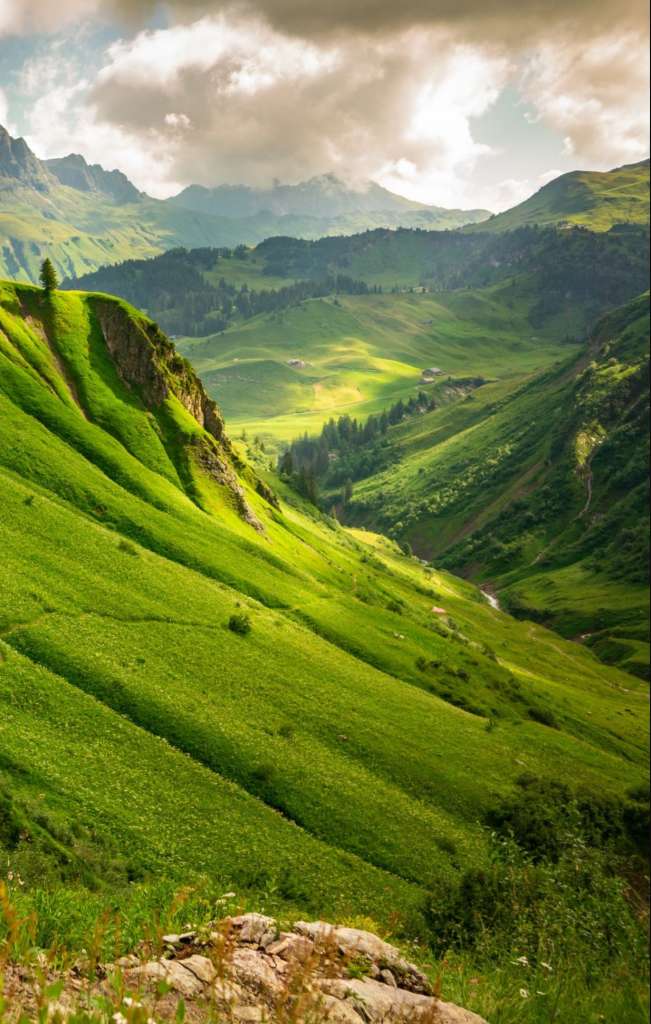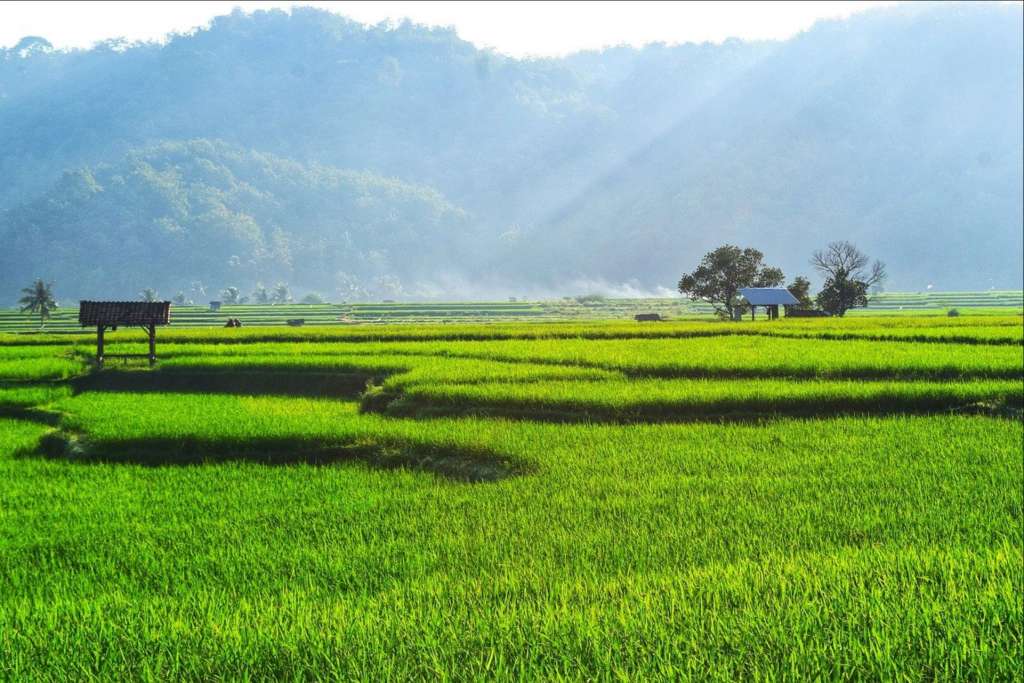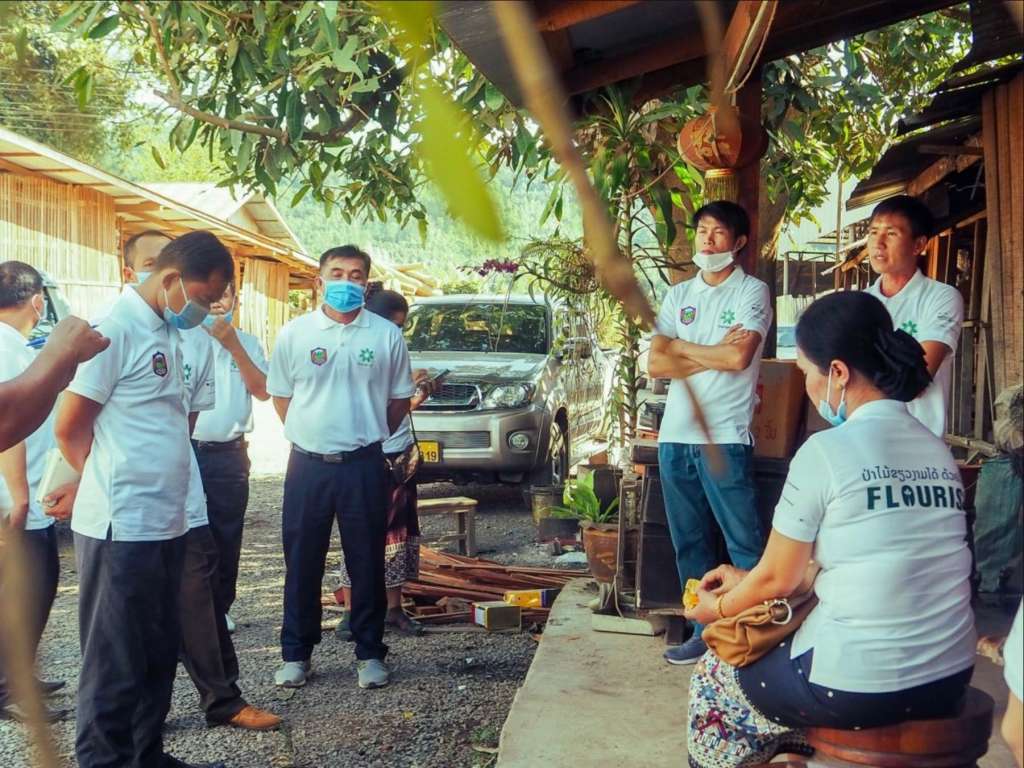Green Revolution

Green revolution; Rapid population growth, especially in underdeveloped countries, creates great problems in nutrition in these countries. In the underdeveloped poor countries of Africa, Asia and South America, a large part of the population faces hunger. That’s why scientists are making efforts to increase productivity in agriculture.
One of these scientists, American Prof. Borlaug’s success in the Mexican wheat variety he has grown has been described as the “Green Revolution”. After that, more suitable varieties were found by hybridization. However, it is a fact that it is not always right to generalize the results obtained in research institutes and trial stations.
The main point to consider is to transfer these achievements beyond the borders of research institutions to the villagers in a way that will benefit them, but to ensure that they always get a secure product with their tools and conditions. The following article wants to explain this and emphasizes that many things can be learned from the villagers.
Prof. Dr. When Norman E. Borlaug received the Nobel Prize in 1970, this great achievement of his life was interpreted with big headlines as the “Green Revolution”. But Borlaug himself saw some corrections in this regard. According to him, there had been many green revolutions by this time. The first and biggest of these were made by women.
Namely, when the prey of men decreased, women started to grow plants 10,000-12,000 years ago in the eastern parts of Mesopotamia, that is, on the mountain slopes of Iraq and Iran. This was followed by many revolutions such as fertilization, burning weeds, using animal draft force instead of human muscle strength, crop rotation (Alternation), evaluation of participation, use of chemical substances as fertilizer and fighting pests.
All this was long before Borlaug worked on wheat for decades and invented a wheat variety that yielded 8 times the yield of “regular” wheat. These “High Yielding Variations” (HVY) varieties Borlaug found were described as “Miracle wheat”, with which hunger in the Third World would have been defeated, but these miracle wheats did not.
So let’s say with regret that there is no miracle. The areas where these high-yielding wheat varieties are planted in developing countries are constantly expanding, and at the same time, the yield per hectare has been decreasing since the time these high-yielding wheats were planted only by the richest and most advanced farmers and not on the most fertile soils but on the poorer soils.
Prof. Dr. Norman E. Borlaug’s Views on the Green Revolution

But new hopes are emerging, a new green revolution is beginning. He also works at the world-renowned “International Wheat Improvement Research Center” directed by Borlaug in El Batan, 70 kilometers north of Mexico City. Federico Kocher explains:
“At the moment, the issue has been reversed 180 degrees since the 3 years I have been working here as the sole Swiss and as the director of research on maize. During this time, many “truths” have been learned. For example, in India, where high-yielding wheats are the most, the yield is 25%-50% higher than the average crop of “normal” wheat planting in this country today, but on the other hand, 600% more crops are obtained at the trial stations. The situation is similar in Egypt.
Namely; In developing countries where high-yielding maize varieties are cultivated, peasants in the low tropics are 0.7-1.7 per hectare; In high areas, they get 1.5-2.0 tons of product per hectare. On the other hand, 3-6 or even 6-10 tons of products are taken per hectare at agricultural test stations.
Research is carried out at test stations in developing countries, great things are accomplished, thousands of experiments are carried out, and countless scientific publications are published. But all this, as always, only applies to test stations. For the peasants, however, all this is far from providing any value at all. Therefore, no one gains an extra gram of food. That is the truth.”
These are the bare facts. Dr. In our meeting with Federico Kocher these facts form the core of our conversation. What is the result of this awareness? Should he put an end to these researches at the International Research Center in Al-Batan? Dr. Kocher continues:
“We will undoubtedly continue research and efforts to obtain good seeds. Obtaining these high-yielding wheat and maize varieties is the essential condition for the fight against hunger today as well as tomorrow. The new maize varieties were also introduced by Prof. It cannot provide a miracle effect on its own like Borlaug’s high-yielding wheat varieties. This miracle can only be achieved in a program package and under favorable conditions.
Indeed, the El Batan Research Center is located in 7 test stations in Mexico, it is a short squat, which is resistant to diseases caused by fungi and pests, can grow in moist or dry soils, completes its growth in short sunny sections and matures early, so it does not lie down and has 2 crops per year. cultivates cultivars.
These varieties are varieties that grow and develop in all kinds of cut, wide and high areas. At these stations, approximately 9,000 crossbreedings of bread wheat are made annually, and only 1% of them are resistant to diseases and can maintain their existence in ecological conditions. The world’s largest Gene Bank is located in El Batan, and more than 13.000 test seeds are stored at 0 degrees.
Faulty Approaches

Their specific agricultural characteristics are also stored in computers, and these seeds, which have certain hereditary characteristics, are preserved with the thought that they may be used in the future, and thus these seeds are also saved from extinction. Thus, the International Wheat and Corn Varieties Improvement Center in Al Batan continues its breeding activities. However, this center is not content with these studies alone”. Dr. Kocher continues:
“We made two big mistakes,” he admits: “In the first of these great mistakes, we saw the peasants as ignorant, backward and small. As a missionary effort, we told the villagers to do this, do that and we will know better. For example, Mexican Hindus who planted corn on their sloped fields and plowed those fields for a long time or did not plow them, were told to use tractors. But as a result, the first rains carried away all the fertile soils of these fields.
These villagers were told to use expensive artificial fertilizers. But as a result, weeds grew immensely, but not corn. Medicines were sold to these villagers to destroy weeds, and it turned out that weeds as well as corn stalks left in the field after harvest prevent the humus from drifting under the influence of tropical rains.”
“In short, we were giving a ‘Advice package’ to the villagers, and in this package; There was high yielding seed, plus artificial fertilizers, plus pest control agents, plus planned irrigation, plus planting method, plus, plus, and lots of pluses. Again, we said, this is what you will do. But these were not economic and psychological as they were unrealistic. That ignorant peasant is not ignorant at all. Its cultivation method is often the best under the prevailing conditions.
Although the seed he sows is not the most productive seed, it is at least a seed that gives the assurance of yield, and it is such a seed that it has been chosen for centuries and has gained a durable feature. In short, we should learn from the villagers, not the other way around.”
Partnership

Dr. As in the first, Kocher explains the second big mistake as clearly as follows: “We scientists always want to conclude our work in the direction of obtaining a “Record” product. A record product can only be obtained at trial stations. For the needs of developing countries, the problem is always to get the country average product. The biggest obstacle to a better agricultural technology and this technology to the farmer’s field is the “Fence” surrounding the trial stations, which is the lack of connection and agreement with the villager. With this understanding, a new green revolution will be revived.”
What does this mean in practice? Dr. Kocher says: “Agronomists and scientists should go out into the field and get their hands dirty with the peasant. This, of course, is not due to the cultural revolution” and he continues: “Agricultural engineers in developing countries, who are in charge of growing corn, encounter difficulties during their duties. In some of these countries, the practical work of literate people, and especially of more cultured people, is considered a contemptible job in the eyes of the people. It must be said to them that working shoulder to shoulder with the villagers is also scientific research.
So, first of all, we must help the peasant to plant corn for a week by his own methods and with his own primitive tools. After 3-4 weeks we should come and examine the condition of the plants and see what difficulties there are so that we can work with them.
In this way, we learn things that are not taught in any university. At the same time, we teach these young people to learn from the villagers, which they can later apply in their own country. When these young scientists reach high positions as administrators and practitioners in their countries, agricultural policy is no longer carried out by foreign administrators and politicians.
At the same time, a situation manifests itself in this way. We will provide confidence in the villager we help in his work. We no longer tell him about this and that package of measures, but about options. We tell him to sow high yielding seed, plus and this and not plus that, less weeds, a little sparse seed, some fertilizer, another variety of corn, but not for all his fields.
So that the peasant does not lose everything and we try to convince him that all this is true. But we don’t necessarily advise him to buy record crops.” “Maize yield in developed countries is an average of one ton per hectare. If we have achieved 1.5 or even 2 tons of product per hectare, the problem will be solved for the next three or four years. We have to consider what it means to buy only 50% more of a product in a chronically hungry region. During this time, the villager will have gained the power to buy some artificial fertilizer or have saved enough money to irrigate his field better, and thus will be able to get more crops.
In a word, this would have created a new green revolution.”
Dr. Kocher, Prof. He never underestimates Borlaug’s achievements. Borlaug’s success allowed him to increase yields on wheat and maize in Mexico, India and Pakistan. However, Borlaug says that it is the job of journalists to present his achievements to the public as “Green Revolution” with big headlines, and he defines his success as “directing in the right direction”.











